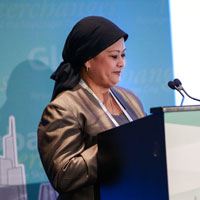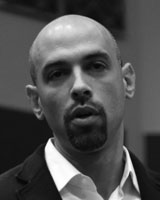Session 3a: Responding to Cultural Context
Chair: Stefan Krummeck, Farrells
Speakers
Click a presenter to see a video of their presentation, and the accompanying paper and PowerPoint presentation.
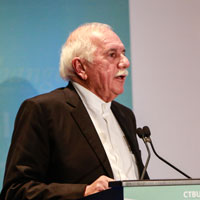
Moshe Safdie
FounderSafdie Architects
“Dense Urbanism: The High-Rise Tower as a Building Block for the Public Realm”
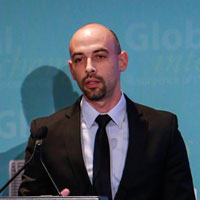
Samuel Luckino
Vice PresidentArquitectonica
“The Inevitability of Global Adaptation: East and West”
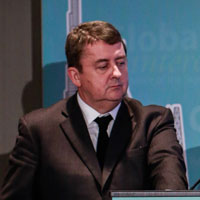
Peter Brannan
Asia Practice LeaderSkidmore, Owings & Merrill
“The Inevitability of Global Adaptation: East and West”
Session Summary
The practice of designing a tall building devoid of its local context has long since gone out of vogue, as architects and developers shift their attention towards integrating local cultural and environmental conditions in the design of tall buildings. This is an increasingly difficult challenge as design responsibilities are carried out internationally by those that may be unfamiliar with a location’s history, social framework, and urban dynamics. This session featured presentations that examine how skyscrapers have been implemented with an increased sensitivity for local context and how differing governmental regulations can drastically affect outcomes for these buildings.
The session began with a presentation by Moshe Safdie, Founder, Safdie Architects, who stated that the tall building must become a friendly contributor to the public realm in our cities. Through several examples of his own work, starting with Habitat 67, Safdie walked the audience through his ideas about reinventing the public realm. Safdie also covered the Sky Habitat Residential Development in Singapore and Golden Dream Bay in Qinhuangdao, China. The projects demonstrate a fractalized approach to creating stepping patterns that provide for landscaped terraces and good sun and ventilation exposure. Going forward he advocated the use of the high-rise tower as a building block, but that the towers should be of a new mixed-use typology that is extroverted and connective. In this way we can reinvent the public realm as one that is truly diverse, public, three dimensional, and seasonally convertible. He stressed that urban design must become a respected contributor to the development of vital cities.
Next, Faudziah Ibrahim, General Manger, KLCC Property Holdings Berhad, described the effort to transform the city center of Kuala Lumpur. Her presentation examined the role of skyscrapers in a master planned mixed-use commercial development. She drew upon her work on the KLCC Master Plan to explore how skyscrapers such as the Petronas Twin Towers have reshaped the physical landscape and surrounding amenities of Kuala Lumpur. Ibrahim not only analyzed the success of the first phases of the KLCC Master Plan, but also offered a preview of the final stages of the plan, which will continue to transform the urban fabric of Kuala Lumpur. She talked about trying to understand the vision of what society wants in their cities, on grade, below grade, and above grade. Efficiency and profitability might be important to the developer, but it is urban vibrancy that will bring the masses and ensure higher levels of success.
The final presentation of the session was delivered by Samuel Luckino, Vice President, and Peter Brannan, Hong Kong Office Director, Arquitectonica. Their presentation focused on the variability of developmental logistics across international borders. They began by discussing Chinese investment abroad and the prevalence of “ghost cities” in China. They likened this trend to the complex web of stakeholders in China when compared to the United States. They described the particular issues of US architects working in Asia, as it is more common in Asia to have a high level of government participation on projects in general. This contrasts sharply with development in the United States, where the development criteria will be set by the developer, leaving the architect in a leadership position on the project with the government as an overseer. In the United States the project design is mostly complete when bids are tendered, whereas in Asia they use phased contracts so that the foundations might be under construction while the superstructure is still being designed.



